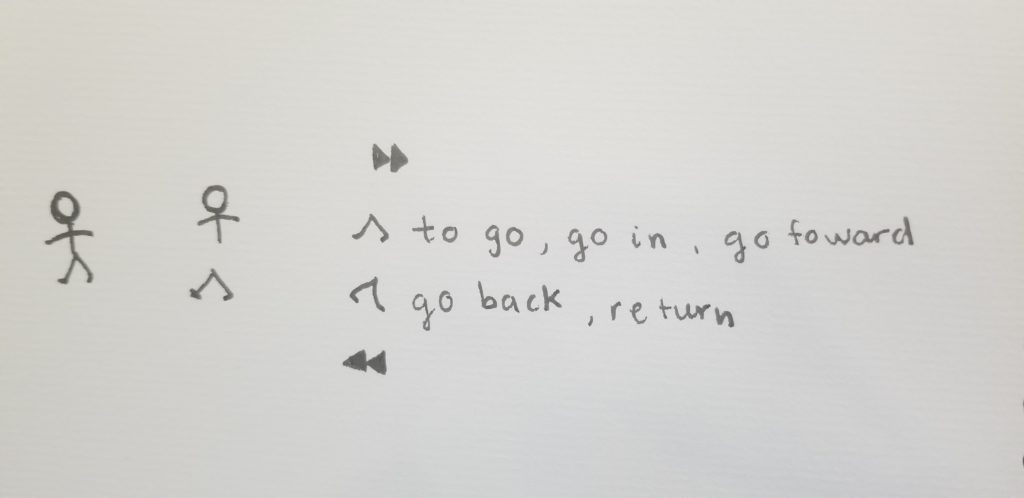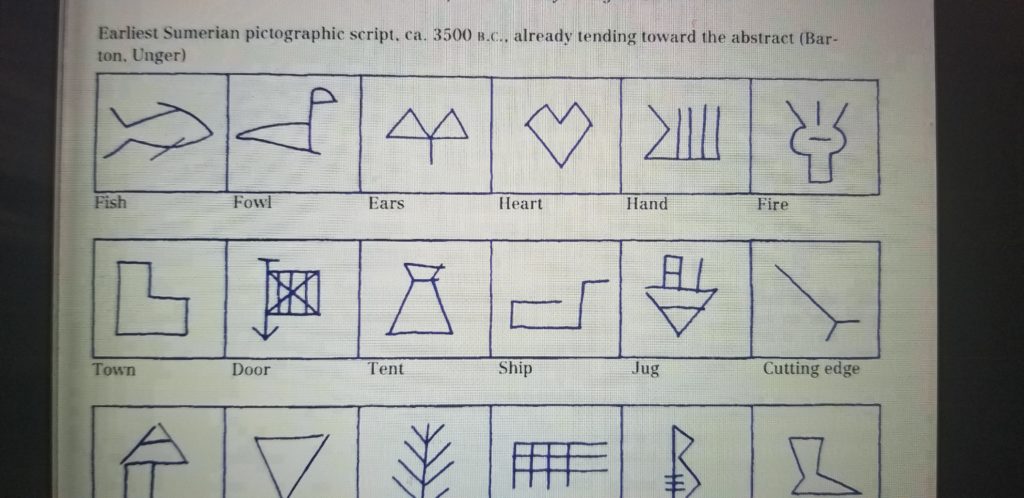Even with well-written languages and phonetic words in this digital world, we are already programmed to learn and understand the symbols and ideographs that existed thousands of years ago. In this blog entry, I want to focus on comparing some music-control buttons on Samsung Music to the Egyptian hieroglyphics and Sumerian logographs. Traveling through time, space, and cultures, it’s fascinating to see some of our modern icons like the skip and heart buttons were used by ancient civilizations.


In popular culture, the play triangle is one of the most widely known symbols. The skip button simply is the 2 triangles that indicate to play the next song or reverse to the previous one. They show the direction of motion. And in this example of Egyptian hieroglyphics, the word also means to forward or backward depend on the direction. Just like how we “cut and paste” the triangle of the play button to create the new skip button, the ancient Egyptians had “cut” the simple pictograph of the human figure to express more abstract and complex depictions. But unlike the modern design which strikes for simplicity and universal understanding, ancient Egyptians had no interest in popularizing writing as the scribal profession in Egypt was a highly exclusive and lucrative job.

Another icon that can be dated back in history is the heart-shaped button. However, the meanings had changed throughout different cultures. The heart which called “ib” was written like a vase more than an organ. That is because the hearts of the dead were said to be weighed against the “feather of the goddess Ma’at” in the underworld.

The image above is generally regarded as the example of the oldest writings of Sumerian script records from the fourth millennium B.C. They are pictograms drew in clay and almost identical to our modern heart shape. In contrast to the exclusive Egyptian hieroglyphics, the Sumerian writings aimed for exchanging information so we can see they were more stylized and simple. Both the modern heart icon and the Sumerian logograph seem to be representations of pure imagination rather than observation as they have barely to none connection with the actual organ.
Communicating is the core survival skill of our ancestors. But it’s through the test of history, time, and cultures that those storytelling skills become a good design which able to deliver complex ideas in a limited space.

I like your image and drawn references for proving the concept! The symbol of “to go” is an interesting way to interpret the meaning of “play”, but the right-pointing triangle might be a modern literal rule as we read from left to right. It might be intriguing to learn more about how Egyptians decide their reading direction. Great findings overall!
Excellent analysis. I especially like your connection of cut and paste – elements of one icon into another to imply parts of meaning.
Inspiring observations and drawings. I agree with you that the design process should be full of creativity and communication.
Wow your response is so well organized and well illustrated.